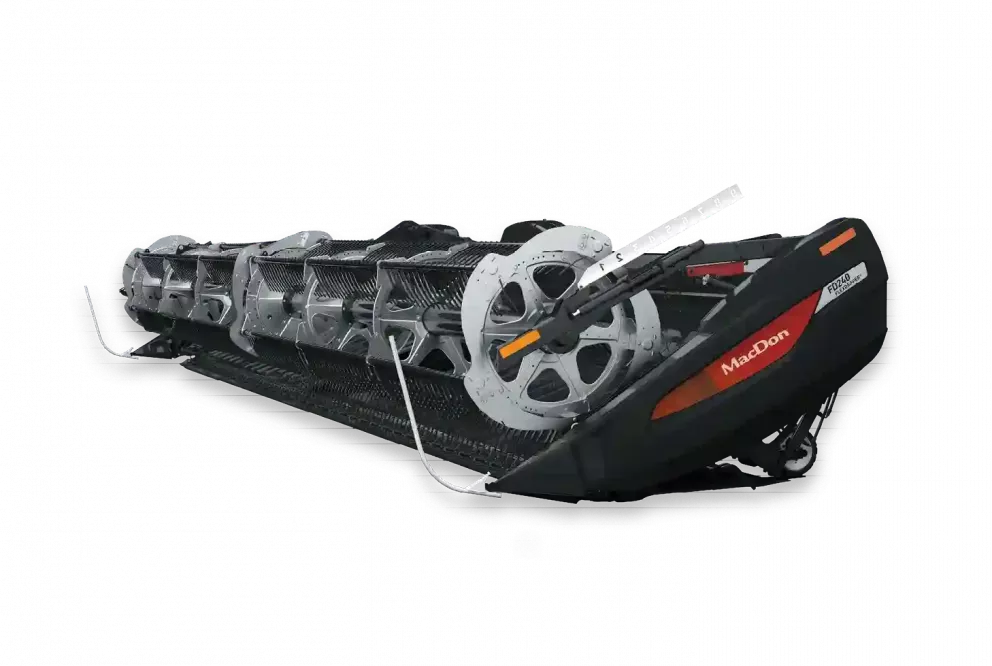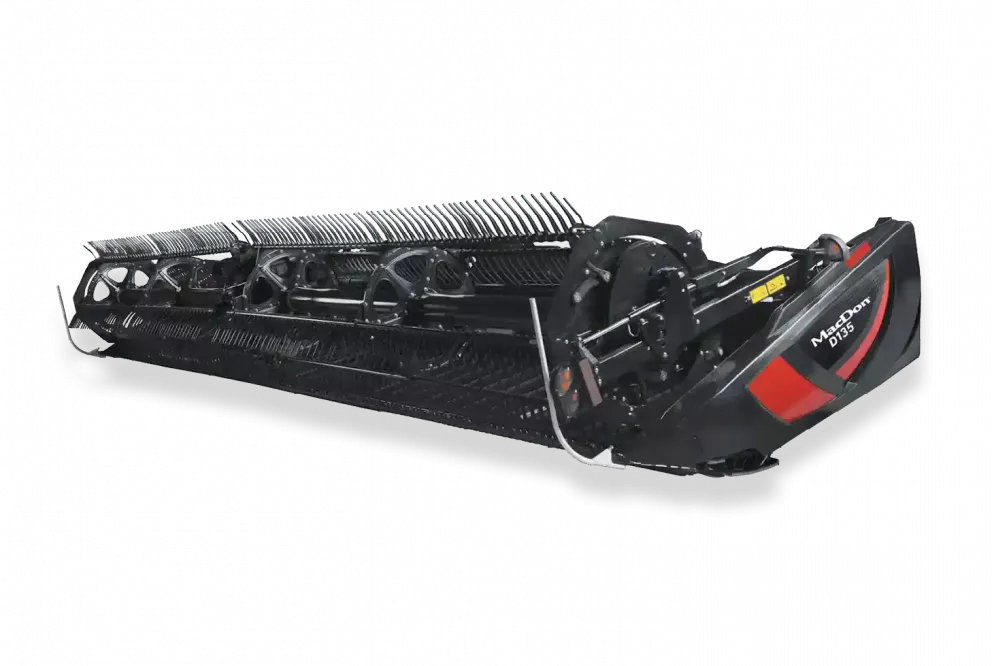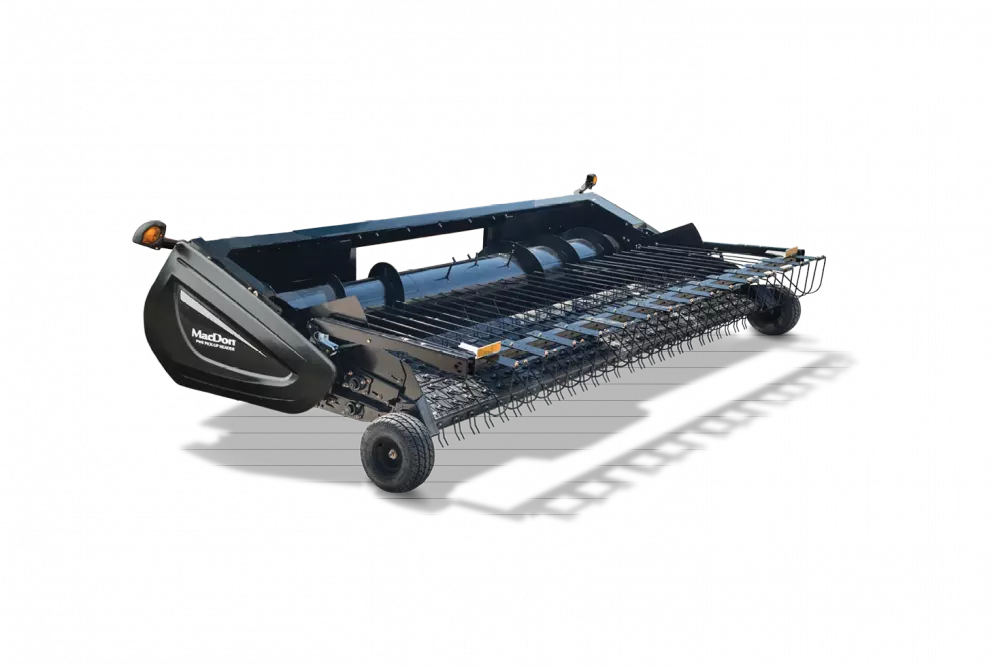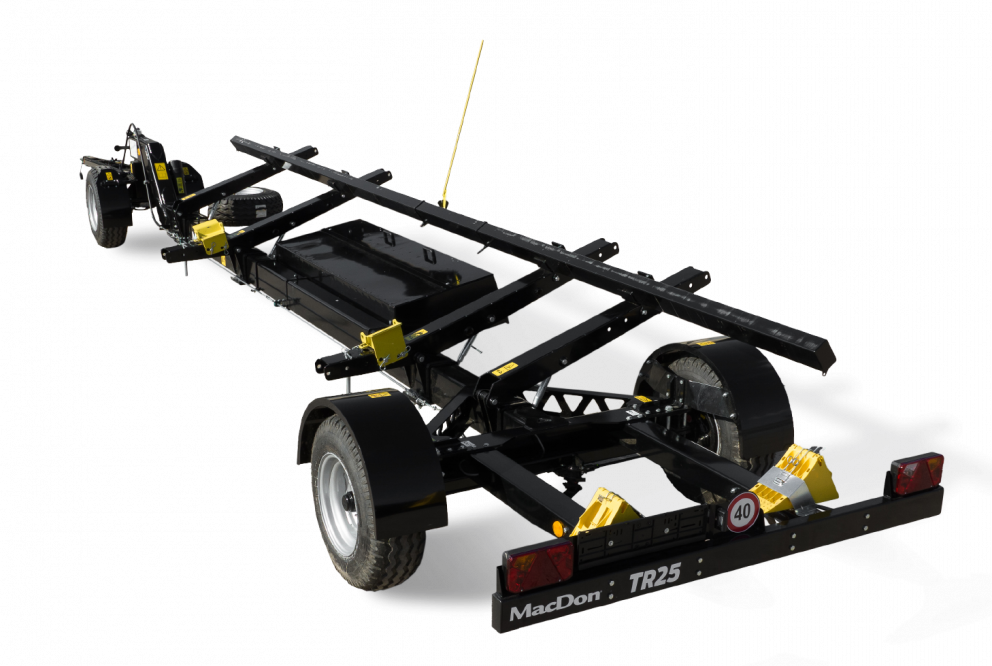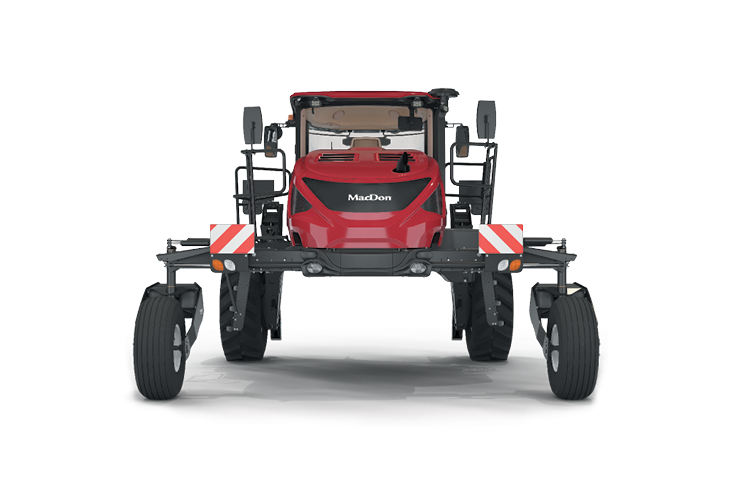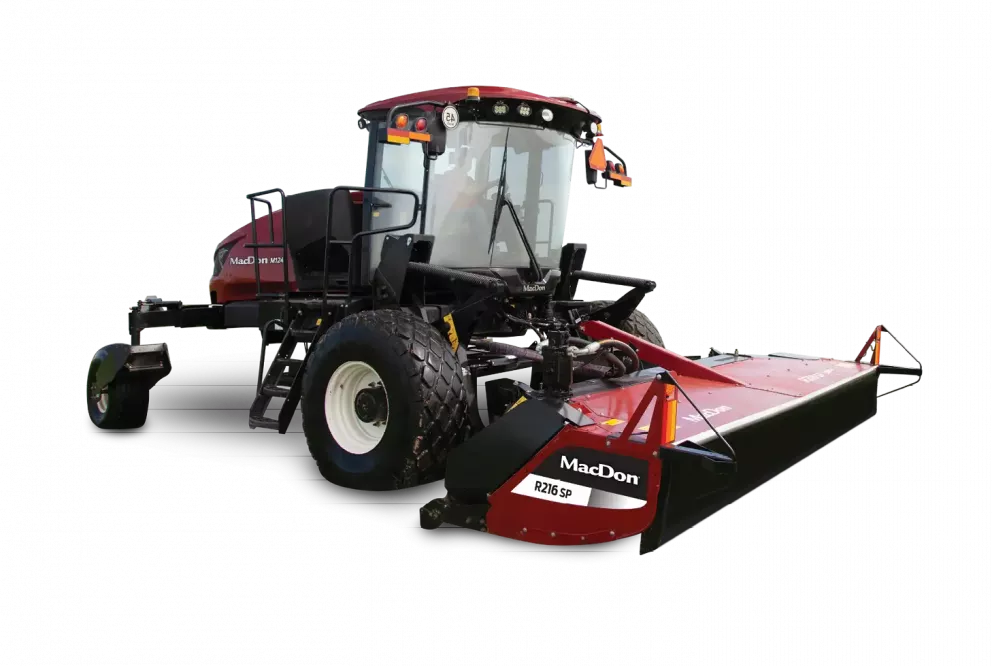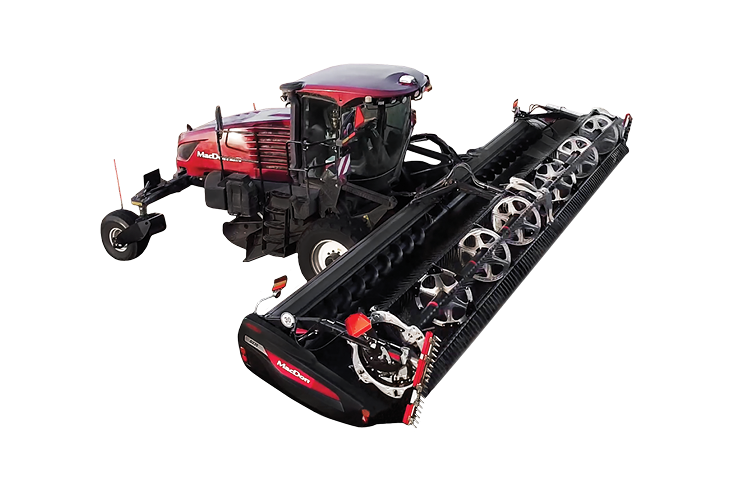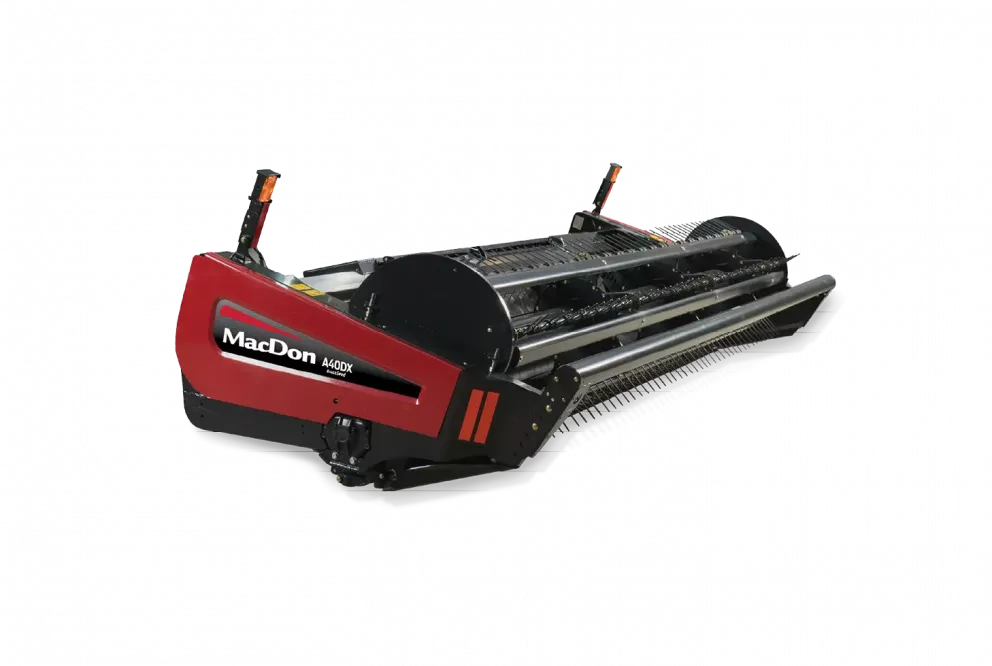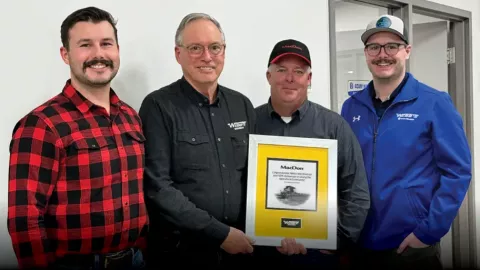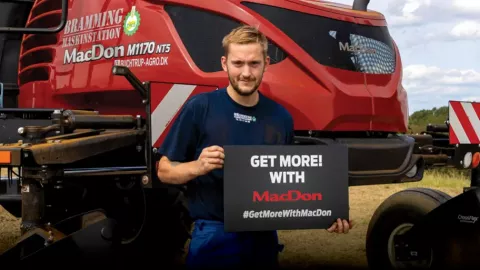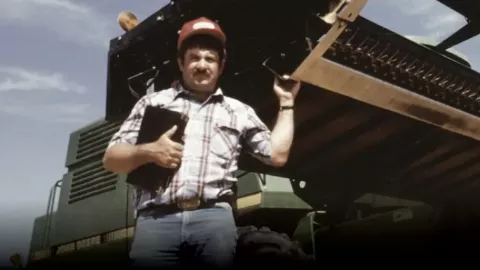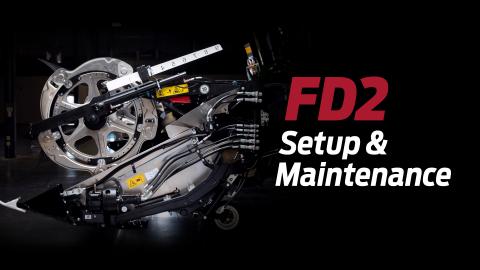One Step Ahead
Shawn Johnson says that his FD70s give him an advantage over others.
WE CAN ALWAYS START A GOOD HALF HOUR TO AN HOUR EARLIER IN THE MORNING BECAUSE IT FEEDS IN EVEN…
Shawn Johnson is fairly particular about his harvesting machinery. After all, as head of Johnson Harvesting, a family owned custom harvesting operation that has been in business for more than five decades, Shawn has learned a thing or two about what works – and what doesn’t – with each aspect of a combine. And when it comes to the business end of a combine, the header, he’s preferred MacDons above all others since equipping their first 960 Draper Header back in 1997.
“Every time MacDon makes something new they just make it that much better,” said Johnson from his family’s 5,000 acre (2,000 hectare) home farm near Evansville, Minnesota. “For example, the 962s were better than the 960s. Then we went to the 974 FlexDrapers®, and they were also a significant leap forward.”
So when it came time to equip his nine Case 8120 combines they chose the best and the biggest that MacDon has to offer – FD70s in the 45' (13.7 m) version. Johnson says that he looks for three key attributes in his equipment – simplicity, control and performance – and he finds all three in abundance in his FD70s.
“We follow the harvest north from Oklahoma to the Dakotas and we typically run a crew of between 19 and 21 with differing levels of harvesting experience. With so many employees the concern with new machinery is ‘can they handle it?’ MacDon headers are easy to learn and operate. Generally, you only have to show someone once and he’s got it figured out. The headers are also pretty forgiving. Things don’t have to be true or exactly correct to keep going. For example, when the wing hasn’t been adjusted correctly it still cuts. The canvasses run even if they have a tear in them.”
Johnson says that the header’s simplicity even extends to its transport package, which makes it possible for the operator to quickly detach the unit and tow it behind the combine when moving from field to field, eliminating the more time consuming method of using a separate truck and operator.
“The transport package is durable and simple. It doesn’t take long to learn how to do it. One guy working alone can put it into transport mode in just five minutes, and with two guys it’s even faster.”
As for control, Johnson says that operators find the header very easy to operate, getting more work done with less fatigue.
“FD70s provide excellent visibility of the canvas and cutterbar compared to other headers we’ve seen. I also like that you can adjust the cutterbar with the hydraulic header tilt cylinder. If you get into rocky conditions you can roll it back or tip it forward if you are in more lodged conditions.”
But what Johnson, and his customers, appreciate most about his FD70s is their in-field performance – both in terms of speed and crop recovery.
“When you look at a harvested field you can tell if it was a MacDon FlexDraper® or something else that did the harvesting. It cuts better, it cuts lower, it recovers more beans. Our customers notice that.”
It’s also not hard to notice just how much more they can cut in a day with the FlexDrapers. Johnson says that they are typically able to run at the same speed or faster than other custom harvesters using smaller headers.
“Depending on the conditions, we can cut at between 4.5 and 6.5 MPH (7.2 and 10.5 km/h). We were combining in North Dakota, in green straw wheat that was yielding probably in the 40s. With our 45' (13.7 m) header we were going 2.8 to 3.2 MPH (4.5 to 5.1 km/h), and the other combiners near us with 35' (10.7 m) headers were going the same speed, even though we were taking 10' (3 m) more than they were. Of course the guys with the auger heads weren’t even going that fast.”
Another advantage Johnson’s FD70s give him over competitors is the ability to start earlier and cut later in the day, thanks to the header’s heads-first crop flow into the combine, even when conditions get damp in the early morning or late evening.
“We can always start a good half hour to an hour earlier in the morning because it feeds in even, and we can always go later at night because of the continuous flow of grain coming in evenly. Even feeding is key for ensuring that threshing and flow through the combine isn’t interrupted.”
But for all of the benefits his FD70s have brought his operation, Johnson grudgingly admits that they have created more work for him in one area.
“The reason we went to the 45' (13.7 m) headers was to save hours on our combines, but we have just ended up doing more work with the time we have saved. I now find myself continuously trying to find more work, as with these machines we simply can cut more. This means more dollars for our custom operation.”
